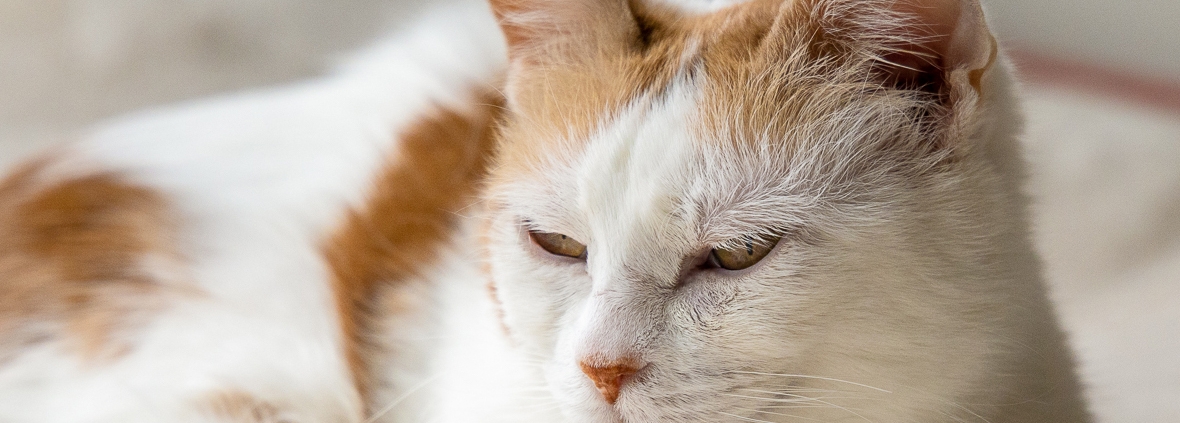Understanding Feline Osteoarthritis
Osteoarthritis (OA) in cats is highly prevalent but frequently under diagnosed.
While often associated with senior dogs, studies show that feline OA is widespread and clinically significant:
- >90% of cats over age 12 have radiographic evidence of degenerative joint disease (DJD).
- ~60% of cats over age 6 are affected radiographically.
- ~40% are believed to experience arthritis-related pain.
This distinction between radiographic disease and clinical pain is critical. Not all cats with radiographic OA will have detectable pain, but chronic joint disease predisposes them to maladaptive pain syndromes.
Why It Matters: Pain Pathophysiology
OA in cats doesn’t just cause local joint pain. Over time, changes in the central nervous system lower pain thresholds and create maladaptive pain states:
- Allodynia: non-painful stimuli trigger pain.
- Hyperalgesia: painful stimuli cause exaggerated responses.
This explains why cats may appear variable day-to-day, with waxing and waning signs, and why untreated OA often becomes more refractory to management over time.
Etiology in Cats
Unlike dogs, where OA is often secondary to developmental orthopedic conditions, cats more commonly develop primary or idiopathic OA. Contributing factors include:
- Age-related cartilage degeneration.
- Breed predispositions (e.g., Scottish Folds with osteochondrodysplasia).
- Maine Coons, where up to 25% show hip dysplasia leading to OA (Loder & Todhunter, 2018).
- Trauma, patellar luxation, and hip dysplasia (less frequent than in dogs).
Clinical Recognition: Why It’s Difficult
Cats rarely show overt lameness. Evolutionarily, masking pain reduces predation risk, meaning many clinical signs are subtle:
- Reduced jumping or altered jump strategy.
- Decline in grooming, leading to a matted or greasy coat.
- Changes in play, hiding behavior, or reduced social interaction.
- Altered litter box habits due to difficulty entering, posturing, or climbing stairs.
These are often misattributed to “normal aging.”
Diagnostic Approach for Veterinary Teams
Diagnosis should be multifactorial, integrating:
- Client history: Targeted questioning about activity, mobility, grooming, litter use, and behavior.
- Physical exam: Orthopedic palpation, pain response, and range of motion testing. Note: absence of exam pain ≠ absence of disease.
- Imaging: Radiographs are helpful but not definitive. Studies show poor correlation between radiographic changes and clinical pain (Freire et al., 2011). Disease may precede radiographic findings.
- Pain trials: Therapeutic trials with analgesics can provide both diagnostic and clinical value.
Communicating With Clients
- Educate that “slowing down” or “getting old” often indicates pain.
- Encourage home video capture of mobility tasks (stairs, jumping) to illustrate subtle changes not seen in clinic.
- Explain the disconnect between radiographs and pain to manage expectations about diagnostics.
Bottom Line
Feline OA is common, under-recognized, and a significant contributor to chronic pain syndromes. Early detection—through careful history, exam, client observation, and imaging—enables proactive, multimodal management that can preserve mobility and quality of life.
References
- Hardie EM, Roe SC, Martin FR. Radiographic evidence of degenerative joint disease in geriatric cats: 100 cases (1994–1997). JAVMA. 2002;220(5):628-632.
- Slingerland LI, et al. Cross-sectional study of the prevalence and clinical features of OA in 100 cats. Vet J. 2011;187:304-309.
- Enomoto M, et al. Anti-nerve growth factor monoclonal antibodies for the control of pain in dogs and cats. Vet Record. 2018.
- Loder RT, Todhunter RJ. Demographics of hip dysplasia in the Maine Coon cat. J Feline Med Surg. 2018;20(4):302-307.
- Lascelles BDX, et al. Relationship of orthopedic exam, goniometric measurements, and radiographic signs of DJD in cats. BMC Vet Res. 2012;8:10.
- Freire M, et al. Radiographic evaluation of feline appendicular DJD vs. cartilage pathology. Vet Rad Ultrasound. 2011;52(3):239-247.


